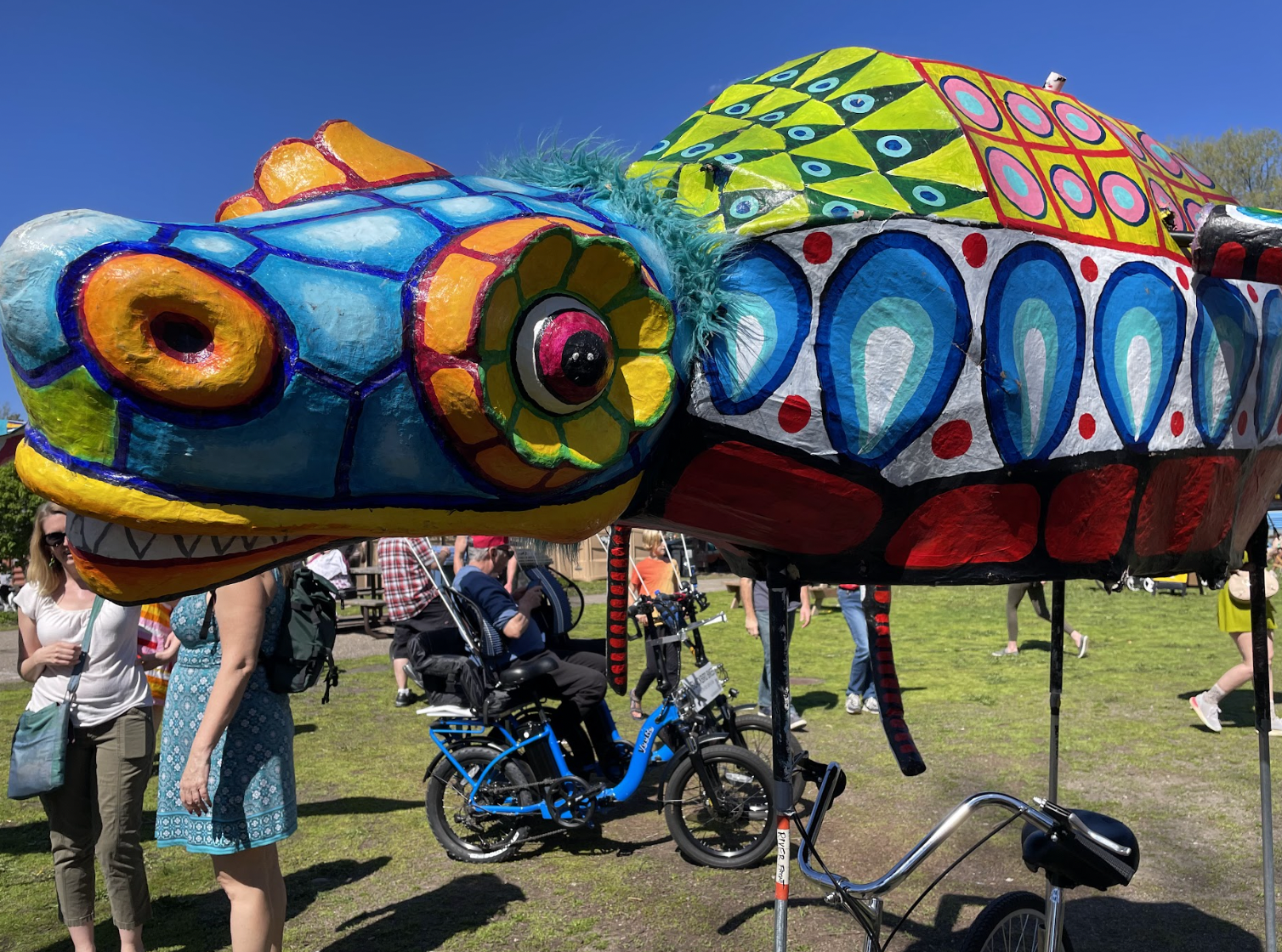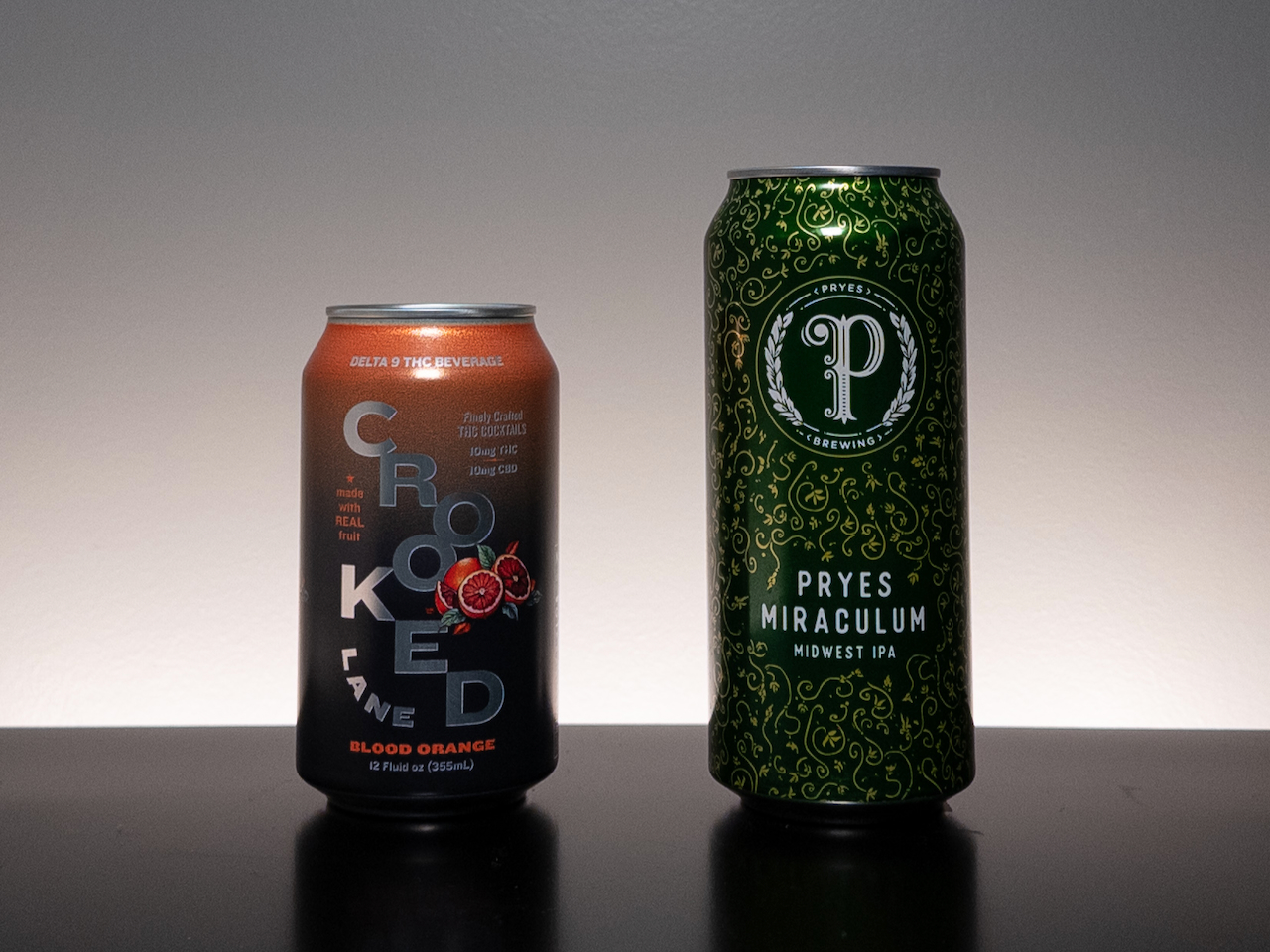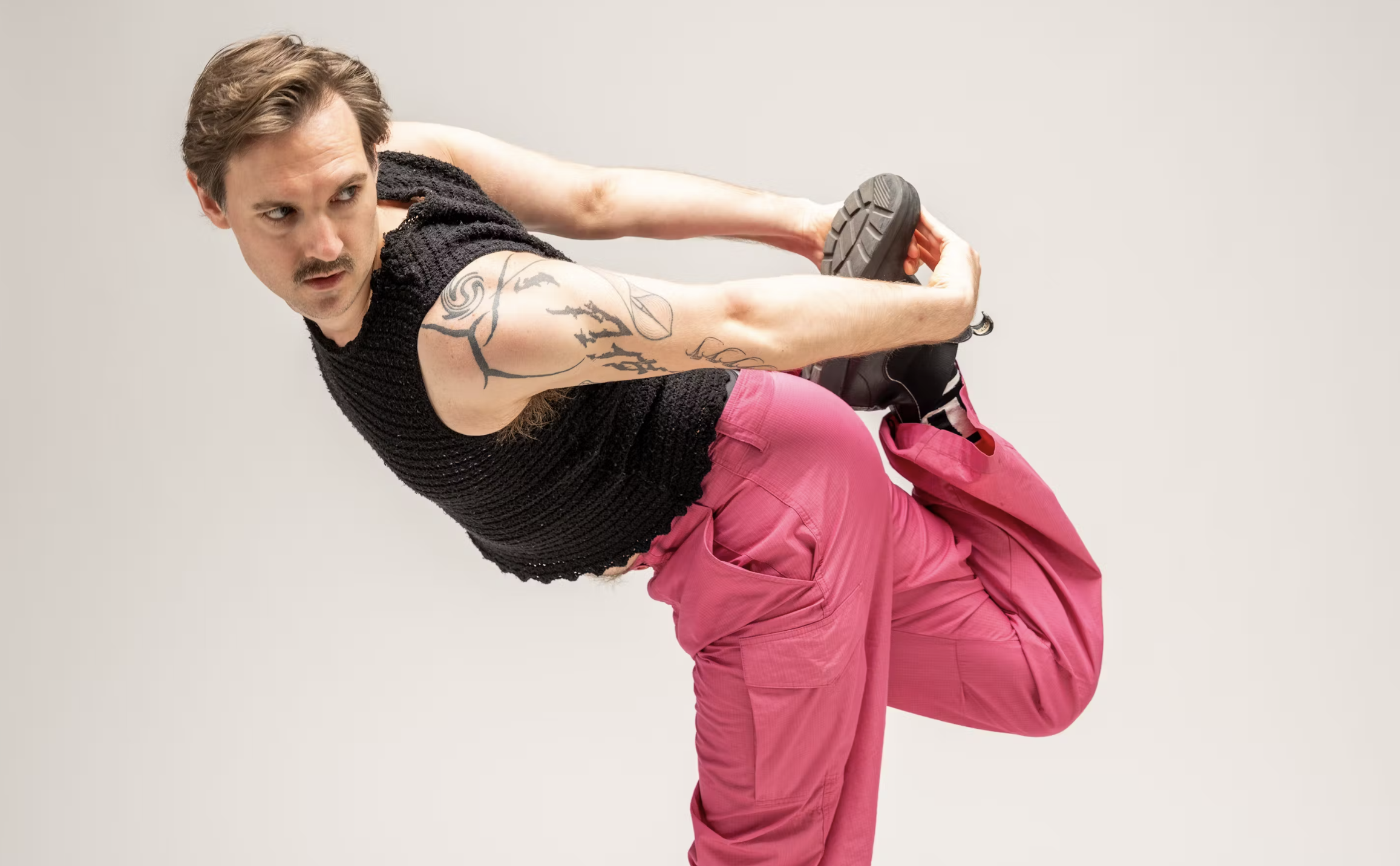If you were anywhere around south Minneapolis on the first weekend of May, you probably noticed the puppets. Puppets on bikes. Puppets on stilts. Puppets on trailers, on backpacks, worn as hats, held up by teams of five, flying through the air like kites.
For much of the country, puppetry conjures images of children’s ministry and creepy marionettes. In Minneapolis puppetry means something much different, and it doesn’t just come out for one weekend. There are multiple dedicated puppetry workshops, theaters, and companies around the city, not to mention the national headquarters of the Puppeteers of America. Minneapolis is a hotbed of puppet action.
“Puppetry is a very old school that goes back thousands of years to many, many cultures," says Pasha Milbrath, a longtime participant in community puppet productions. "But in terms of United States urban puppetry it would be hard to find any city that has both the depth of time and the breadth of experiences as Minneapolis."
The city traces its puppet roots to 1937, when a group of mostly hobbyists and woodworkers founded the Twin Cities Puppeteers Guild, one of the first puppeteer guilds in the country. The guild attracted performers, artists, wood carvers, painters, and builders, combining many interests and skill sets into one genre. The group still operates today as a local chapter of the Puppeteers of America, working mostly with traditional styles of puppetry.
Still, puppetry remained an extremely niche activity. Then came May Day.
In 1975, the nascent In the Heart of the Beast Theatre launched the first MayDay Parade & Festival as we know it and invited the whole town.
In the Heart of the Beast used cheap, readily available materials like cardboard and newspaper for their puppets. Their workshops were, and remain, open to anyone. Suddenly, puppetry was no longer in the domain of skilled professional and hobby artists, but a widely accessible community activity.
It didn’t take long for Milbrath to get hooked on puppets. After a few years as an enthusiastic spectator, she jumped into the action as a HOTB volunteer in the 1980s. From then on, she was a fixture at MayDay workshops. When BareBones, the Halloweentime puppet show centering grief and death as a counterweight to May Day’s theme of rebirth, came around in 1993, she threw herself in headfirst, building puppets, sewing costumes, and more alongside artists of all skill levels after work.
Milbrath doesn’t necessarily consider herself an artist, certainly not a professional one. She had a long career as a special education teacher. She says experiences like hers are common, and partly to credit for the proliferation of puppetry throughout the Twin Cities. “Anybody that wanted to could learn how to make puppets, could perform in this show," she says. "It's like we had a puppet skills machine in operation.”
People even relocate here for the puppet scene, as Felicia Cooper did a few years ago. Cooper is a puppeteer by trade and holds a master’s degree in puppetry—a credential she says requires “a great knowledge of different kinds of glue.” She had lived in various East Coast cities, most recently Pittsburgh, until she came to Minneapolis in 2019 for the Puppeteers of America’s national puppetry festival. She knew she had to stay. “I wanted to be somewhere with a strong puppetry community and all roads kind of led to Minneapolis,” Cooper says.
Cooper describes the puppet world of Minneapolis as the “holy trinity” of puppetry. Between the traditional handicraft puppetry that the Puppetry Guild promotes, the “cardboard explosion” of the large-scale community productions like MayDay and BareBones, and what Cooper calls “a very experimental, more traditionally artsy side” of puppetry that comes out of puppet-specific theaters like Open Eye Figure Theater, there’s something for everyone in the puppetry universe. The entry points for new puppeteers are reportedly low and there is a lot of room to grow their interests.
Whereas much of the historic puppet scene has been dominated by “white hippies,” as Cooper put it, that is quickly changing.
Monkeybear’s Harmolodic Workshop is dedicated to boosting BIPOC puppeteers and their work. When Chamindika Wanduragala, the founder of Monkeybear, saw her first puppet show back in 1996, she said she was instantly captivated. “I totally believed the puppets were alive,” she says. “I came out of that show and thought, ‘I want to do this someday.’” It still took 20 years for Wanduragala to make the leap into puppetry from her work primarily in visual art and DJing.
“What frustrated me about the scene was the fact that it was so white,” she says. “Puppeteers would ask their friends to be in their shows, and that’s how people would learn. But all their friends were also white so the people that were learning were always more white people.”
Creating a more formal puppetry learning space is part of the philosophy of Monkeybear, and an answer to some of the older puppet theaters in the city. Monkeybear’s Harmolodic Workshop started in 2016 with a week-long intensive course for BIPOC artists to learn the craft of puppetry. Putting on and participating in that workshop was Wanduragala’s first experience as a puppeteer. “We wanted to get to a point where we could be our own mentors,” she says.
In the eight years of its existence, Wanduragala says, it’s grown far beyond even that. Monkeybear alumni are slowly filling the puppet scene in the Twin Cities, making art inspired by traditions from all over the world. Two alumni, Oanh Vu and Sofia Padilla, currently run the Puppet Lab program at Open Eye Figure Theater, another development opportunity for puppet artists.
At a certain point, the puppetry ecosystem becomes self-sustaining.
“Everyone knows puppetry lives here,” Cooper says. “I can call someone on the parks board or whatever and say I want to do a puppet show and no one goes, ‘A what? No, not that dying art form.’ It’s more like, ‘OK, cool. What do you need? An outlet?”
The result is a quiet, unassuming puppet mecca, as evidenced by the strength of this year’s MayDay Parade, even in the absence of direct support or planning from In the Heart of the Beast. Residents of south Minneapolis took the parade into their own hands and filled the streets with an array of puppets just as big and colorful as ever.







